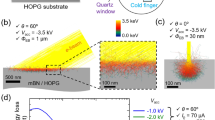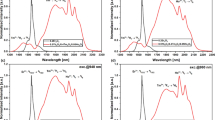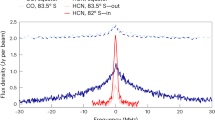Abstract
RECENT rocket investigations of the vacuum, ultraviolet radiation emitted from the aurora and airglow have shown up the need for laboratory measurements of molecular band intensities in this spectral region. Such laboratory investigations have until now been hampered by a lack of suitable intensity standards. One prominent band system of importance in this region is the Lyman–Birge–Hopfield (LBH) (a 1IIg− X 1Σ+g) system of N2, which lies between 2000 Å and 1200 Å. It has recently been observed in auroral spectra taken by rocket-borne spectrometers1,2. The only laboratory measurements of intensities of bands of the LBH system in emission are estimates of photographic plate blackenings3, where no account has been taken of variation of instrumental response with wave-length.
This is a preview of subscription content, access via your institution
Access options
Subscribe to this journal
Receive 51 print issues and online access
$199.00 per year
only $3.90 per issue
Buy this article
- Purchase on SpringerLink
- Instant access to full article PDF
Prices may be subject to local taxes which are calculated during checkout
Similar content being viewed by others
References
Crosswhite, H. M., Zepf, E. C., and Fastie, W. G., J. Opt. Soc. Amer., 52, 643 (1962).
Isler, R. C., and Fastie, W. G., J. Geophys. Res., 70, 2613 (1965).
Birge, R. T., and Hopfield, J. J., Astrophys. J., 68, 257 (1928).
Zare, R. N., Larsson, E. O., and Berg, R. A., J. Mol. Spec., 15, 117 (1965).
Nicholls, R. W., Proc. Phys. Soc., 85, 159 (1965).
Nicholls, R. W., Nature, 186, 958 (1960).
Author information
Authors and Affiliations
Rights and permissions
About this article
Cite this article
MCEWEN, D., NICHOLLS, R. Intensity Distribution of the Lyman–Birge–Hopfield Band System of N2. Nature 209, 902 (1966). https://doi.org/10.1038/209902a0
Issue date:
DOI: https://doi.org/10.1038/209902a0



